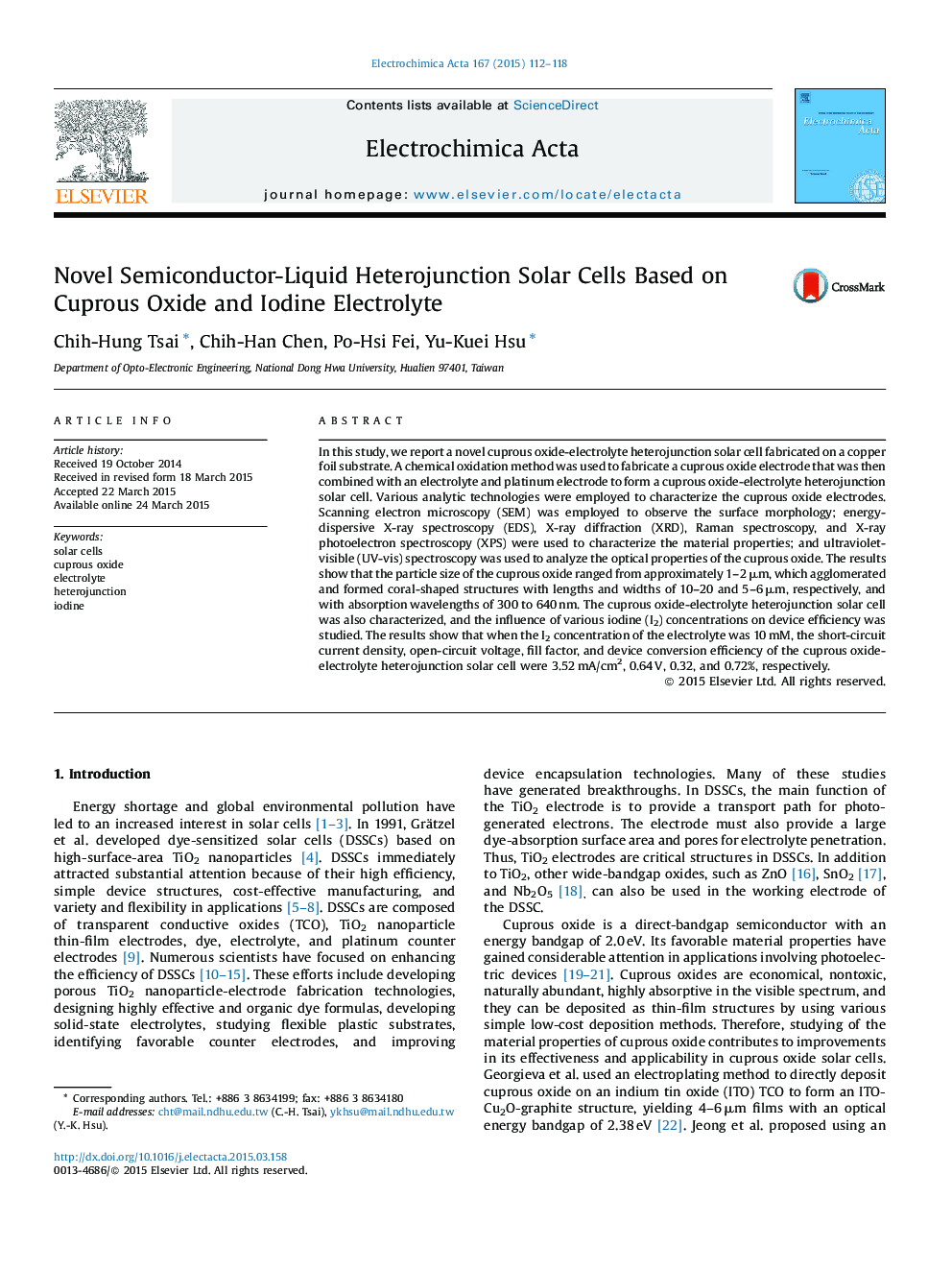| کد مقاله | کد نشریه | سال انتشار | مقاله انگلیسی | نسخه تمام متن |
|---|---|---|---|---|
| 184331 | 459573 | 2015 | 7 صفحه PDF | دانلود رایگان |
• A novel Cu2O-electrolyte heterojunction solar cell was fabricated on a Cu foil substrate.
• The novel solar cell was composed of a Cu2O electrode, electrolyte, and a Pt electrode.
• A chemical oxidation method was used to fabricate coral-shaped Cu2O structures.
• The influence of various iodine concentrations on device efficiency was studied.
ABSTRACTIn this study, we report a novel cuprous oxide-electrolyte heterojunction solar cell fabricated on a copper foil substrate. A chemical oxidation method was used to fabricate a cuprous oxide electrode that was then combined with an electrolyte and platinum electrode to form a cuprous oxide-electrolyte heterojunction solar cell. Various analytic technologies were employed to characterize the cuprous oxide electrodes. Scanning electron microscopy (SEM) was employed to observe the surface morphology; energy-dispersive X-ray spectroscopy (EDS), X-ray diffraction (XRD), Raman spectroscopy, and X-ray photoelectron spectroscopy (XPS) were used to characterize the material properties; and ultraviolet-visible (UV-vis) spectroscopy was used to analyze the optical properties of the cuprous oxide. The results show that the particle size of the cuprous oxide ranged from approximately 1–2 μm, which agglomerated and formed coral-shaped structures with lengths and widths of 10–20 and 5–6 μm, respectively, and with absorption wavelengths of 300 to 640 nm. The cuprous oxide-electrolyte heterojunction solar cell was also characterized, and the influence of various iodine (I2) concentrations on device efficiency was studied. The results show that when the I2 concentration of the electrolyte was 10 mM, the short-circuit current density, open-circuit voltage, fill factor, and device conversion efficiency of the cuprous oxide-electrolyte heterojunction solar cell were 3.52 mA/cm2, 0.64 V, 0.32, and 0.72%, respectively.
Figure optionsDownload as PowerPoint slide
Journal: Electrochimica Acta - Volume 167, 10 June 2015, Pages 112–118
